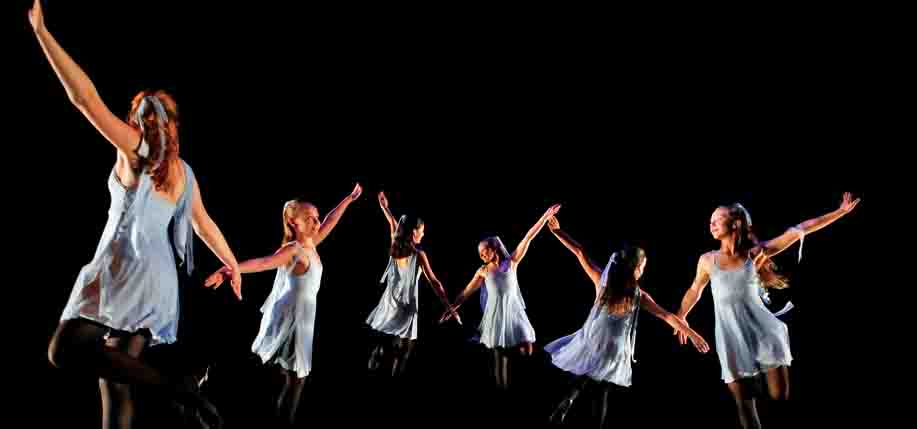Drawing on the patterns and movements of Irish step dancing, choreographer and dancer Darrah Carr has created a new form of dance that she calls ModErin, a fusion of modern and Irish. Fascinated with the idea of dissolving the boundaries between the strict forms of Irish dance and the freedom of movement of modern, Carr founded Darrah Carr Dance Company in 1998. Recently the company joined tap dancer and choreographer Barry Blumenfeld’s Tap Fusion Company at the Duke Theater on 42nd Street in New York’s theater district. The performance proved a delightful combination of tap, Irish and modern dance.
In an artistic directors’ note in the program, Darrah and Barry explain the union between these two styles of dance as “starting from the same place, just wearing different shoes.” This theme was elaborated upon in dances such as “Que Tombo!” (What A Fall!) in which dancers wearing taps on their hands and legs pushed and pulled each other across the stage. Challenging one another to a competition of sorts, they sounded beats and trebles out on their hands and legs clapping and stomping to keep the time.
The show also featured the premiere of Carr’s “The Ballad of Eileen Pink and James Gray.” The dance fused the intricate patterns of Irish dance with Appalachian social dance. Carr notes that while the influence of Irish dance may not be immediately visible to the audience, all the movements have their roots in the traditions of the Irish. Darrah explains that dances like “The Ballad of Eileen Pink and James Gray” began in the studio. “I literally sat down and made a list of Irish dance terms and jumps and modern dance and ballet turns and combined the two,” Carr said.
The expanded boundaries of dance became even more apparent in Carr’s choreography of the piece called “ModErin” in which dancers wore both the soft shoes traditionally used for Irish dance and the hard-toed shoes that closely resemble tap shoes. The traditions of Irish dance were visible in the intricate patterns the dancers followed as they weaved across the stage to the sounds of music by Dublin-based band De Jime. Contrasting traditional with the modern, the piece featured pairs at elbow-length apart and those whose bodies melded together and even sank to the floor. The alternations between the traditional and the contemporary had the effect of freeing the dancers from strict adherence to either form, essentially creating a new form altogether.
Blumenfeld was no less inventive in his usage of contemporary concepts and techniques. In “Trip” Barry combined dance and modern technology, performing a virtual duet with motion-sensors that produce music.
Essential to both Darrah Carr Dance and Barry Blumenfeld’s Tap Fusion is the question of how to blend different types of dance by exploring the places where they intersect and overlap. The results are an illuminating mix of ancient forms with modern movement that serves as a veritable history of Irish dance and its current manifestations. ♦


Leave a Reply